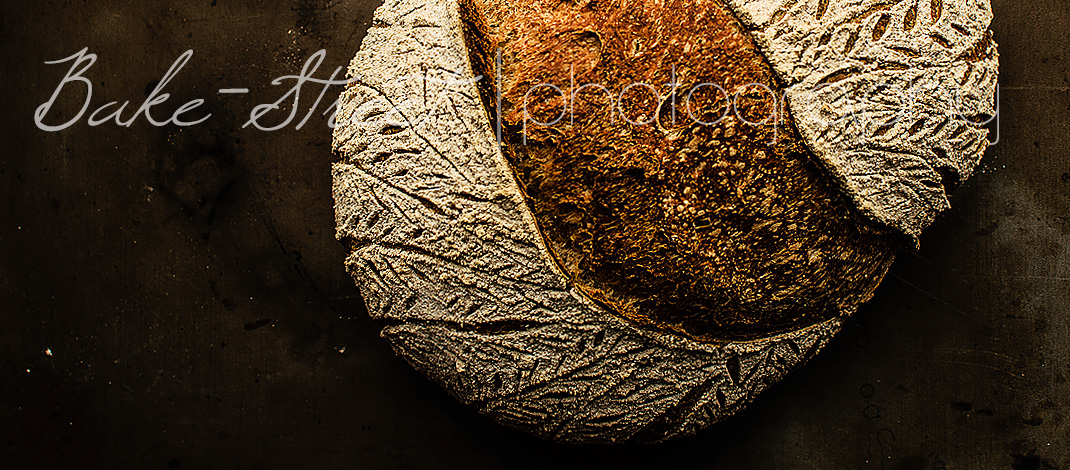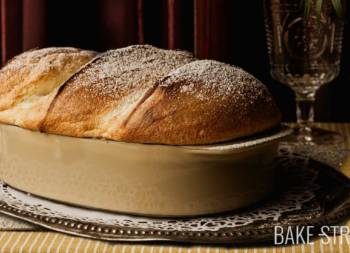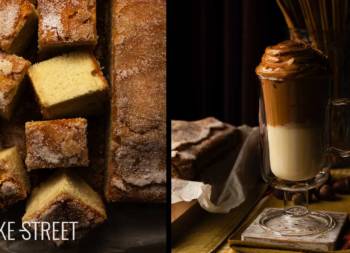
Wheat and whole wheat sourdough bread, knowing better whole flours
This week I bring you a sourdough bread that could be labeled as “taking one step closer to home bread baking”, a wheat and whole wheat sourdough bread. It will be made with two types of flour, one of them we already known thanks to this basic bread (and many other recipes), bread flour, which is one of the simplest flours and more used to make bread.
And the other is a whole wheat flour in a not very high percentage, 25% from final flour weight. Maybe some of you are asking yourself …
What is the difference between wheat flour and whole wheat flour?
The amount of bran it contains. Here we will make a brief pause to highlight a very important point that is often unknown. Not all whole flours have their own bran, in many cases it is added and that does not come from the same crop.
In addition, consuming a whole meal does not mean that we are taking a healthier product, in fact, if we consume the wrong ingredient we will be harmed unknowingly.
We must know what flour we are buying since not all are just as healthy. Here we find a difference of price from a specialized store versus a supermarket, there are differences in the great majority of the cases. It can be added too if it is a product cultivated in an ecological way that can increase its economic value. But this is a separate issue.
What is this bran?
This is the edible outer layer of wheat grain.
How can a whole meal damage me?
For the bran size. This information was shared by Josep Pascual in one of his workshops that I attended. The bran size is a factor to keep in mind when we include it in our diet, it must have a very small size to avoid damaging our large intestine.
When the bran size is bigger than recommended, it tears the walls of the intestine. This leads an inflammation of it that can carry in a very serious disease. For that reason many people who consumes it has no problems to go to the bathroom but they do not know what is happening inside their organism. So if you consume this type of flour or even bran, make sure that its size is fine (we should not find husks).

Wheat…
Wheat is the term that includes cereals, both cultivated and wild, belonging to the genus Triticum. Six kinds of wheat are cultivated, among which we can find about 30,000 varieties.
How does wheat milling affect flour?
Once the wheat grain is harvested it must undergo a resting phase, this period usually lasts six weeks. Metabolic changes occur at the same time as a slight reduction of moisture in the grain.
After standing the grain is taken to the mill and a “cleaning” is carried out to remove impurities that can affect the flour once ground.
After this phase, the grain is subjected to a process called “conditioning” in which water with chlorine is added to the grain to avoid microbial growth. This moisture gives rigidity to the bran layers and softens the endosperm, making it easier during the grinding to separate both.
From here we proceed to grind the flour, can be made in two ways:
- Cylinders: it favors the volume of the bread
- Stone: it conserves more properties and improves the flavor of the bread. The compression that suffers the grain will directly affect the amount of damaged starch.
Four extraction rate
The more we reduce the grain, the more flour will be obtained after sieving it. For example, for every 100 kg of grain the miller takes about 72-75 kg of flour. This would be the percentage of flour that is extracted from the cereal and is called extraction rate.
Another way to classify flours is by their percentage of ashes. A quantity of flour is incinerated, the remaining ashes are weighed and the percentage obtained after burning them would facilitate the information of the flour for its labeling.
What should I keep in mind when working with whole wheat flour?
- Whole wheat flour will always be more delicate to handle than a refined flour. Its presence of bran interferes in the gluten development due to the small edges that may have and that will tear the dough while we manipulate it, avoiding that we obtain a result similar to a bread made with a refined flour.
This can damage the final volume of bread, so you must knead delicately and try to make more folds to give it tension and strength.
- When it contains whole wheat flour, its final hydration will be greater because its absorption capacity is higher, even so, go with the care and add the water wisely.
- The fermentation times will be lower than if we make the bread with bread flour. This is due to the presence of bran that streamlines the process. In this case we may not notice much, but if we elaborate a 100% whole wheat bread, we must take it i mind.
- The previous point is joined with the final bread hydration, if this is high, we will take care to avoid possible catastrophes.
And, not everything is going to be bad! A bread with part of flour, or whole, whole wheat flour will leave a very pleasant taste and aroma. In addition to many nutritional benefits 😉

WHEAT AND WHOLE WHEAT SOURDOUGH BREAD
SOURDOUGH 100% HYDRATION:
- 6.34 oz (180 g) 100% hydration starter refreshed with 80% Shipton Mill wheat flour and 20% Shipton Mill rye flour
Here you can read how to make water yeast fruits or here how to make common sourdough (By the moment, both are only available in Spanish)
FOR THE DOUGH:
- 12.7 oz (360 g) bread flour (I used Pani Ylla flour)
- 5.3 oz (150 g) whole wheat flour
- 1.6 oz (45 g) Guinness
- 11 oz (312 g) water
- 0.38 oz (10,8 g) sea salt
| INGREDIENTS | BAKER´S % | SOURDOUGH | REST | TOTAL |
| Shipton Mill Wheat | 11,25% | 67,5 g | 67,5 g | |
| Bread flour, Pani de Ylla | 60% | 360 g | 360 g | |
| Shipton Mill Rye | 3,75% | 22,5 g | 22,5 g | |
| Whole wheat flour | 25% | 150 g | 150 g | |
| Beer (Guinness) | 7,5% | 45 g | 45 g | |
| Water | 67% | 90 g | 312 g | 402 g |
| Salt | 1,8% | 10,8 g | 10,8 g |
INSTRUCTIONS:
FIRST DAY
Make dough bread.
- In a large bowl add flours and water with beer, mix with your hands until it is well hydrated and looks smooth. Cover with plastic wrap or cotton cloth and allow to make autolysis for 35 minutes.
- Add the sourdough and mix in the bowl helping with a flexible scraper.
- Transfer to a work surface, without flour, and knead. Combine kneading with resting to get almost a complete developed dough.
- Knead 2-3 minutes and let sit 5-6 minutes. Total time kneading will be roughly 10 minutes without time resting.
- Before the first rest, add salt and mix with your hands making sure it is completely incorporated.
- Alternate short kneading with rest until the dough is developed. In total knead about 8 minutes, not counting the rest.
Make bulk fermentation.
- Grease with olive oil a bowl or recipient and put the dough inside. Cover and make a bulk proof for 6 1/4 hoursat room temperature. My home temperature was 69ºF. Turn and fold each 30 minutes the first 3 hours.
- Let stands until it grows a little over of 1/3 of its initial volume.
- Dust with rye flour a banneton, let aside.
Shape the dough.
- Preshape into a boule (ball), be careful not to degas too much, and allow to bench rest for 15 minutes cover with a cotton cloth.
- Shape a boule, following the same process as when preshape a bread.
- Place seam-side up in banneton, cover with a cotton cloth or film and put in the fridge for 19 hours.
SECOND DAY
Bake…
- Preheat oven 450ºF at least 30-40 minutes prior to baking with your stone or steel sheet on it positioned on final rack. Put inside a pan with volcanic stones, this helps to get steam in the baking.
- Transfer the bread from the banneton over a wooden board cover with parchment, seam side down. Score the bread. This time I made a central cut like a -S and wheat spikes in the sides.
- Place the bread into the oven and pour boiling water over the pan with volcanic stones. Close the oven door immediately to trap the moisture.
- Bake for 20 minutes at 430ºF.
- After first 20 minutes, open the oven door to allow steam goes out, remove the track with volcanic stones with kitchen gloves and reduce oven temperature to 410ºF. Bake for 10 minutes.
- Reduce temperature to 375ºF and bake 10 minutes more. Finally bake with convection at 375ºF for 10 minutes. Bread will get a better crust this way.
- Total bake time is 50 minutes.
Ending the bake…
- Once bake has ended, turn off the oven and let sit the bread inside the oven with the door ajar for 15 minutes. Remove from the oven and let cool over a rack.

PRESERVATION: Bread can be stored for up 3-4 days cover with cotton cloth. If the beginning is dry, cut the first slice and inside will be still tender. You can cut the bread into slices, cover with plastic film and freeze. This way is the better to make perfect toast each morning. You can use the bread slice from the freezer and put into the toaster, they will be perfect 😉

Finishing…
After the sermon that I have shared with you today, I hope you encourage yourself to take a step further and try with whole flours. They can be from wheat, spelt, rye … be free to choose, our personal tastes are also important 😉
This wheat and whole wheat sourdough bread is close to basic bread, which we made a couple of weeks ago. Its ingredients and final hydration will allow you to take a step further in the home bread baking, introducing a new type of flour with more bran and more hydration.

Little by little we are making good progress and knowing better the elements with which we can work in bread baking. It is very important to know how they behave to know how to manipulate them. Of course, I am eager to see yours!
Big hugs,
Eva

Sources: Advance Bread and Pastry, El Pan (Hamelman)


